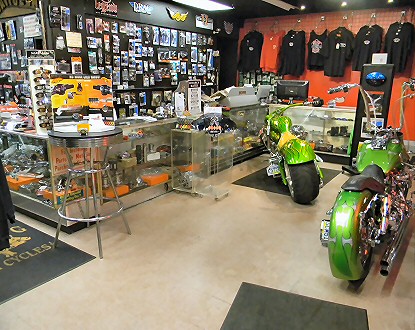Your Best Motorbike Shop for High Quality Parts and Accessories
Your Best Motorbike Shop for High Quality Parts and Accessories
Blog Article
Comprehending the Necessary Components of a Motorbike: A Comprehensive Guide for Enthusiasts
For motorcycle fanatics seeking to elevate their riding experience and ensure their bikes run smoothly, recognizing the important parts of a motorbike is paramount. Each aspect, from the engine's complex workings to the crucial function of the braking systems, not just affects performance but additionally safety and security and convenience. This guide will certainly go through the basic components that every cyclist ought to be familiar with, enabling educated options in both maintenance and prospective upgrades. As we begin this expedition, one must ask: exactly how does each part communicate to produce the smooth trip every enthusiast looks for?
Engine Components

The camshaft plays a vital function in controlling the timing of the engine's valves, ensuring the accurate opening and closing needed for reliable gas and air intake, along with exhaust expulsion. This timing is crucial to preserving ideal engine efficiency and performance. Additionally, the carburetor or fuel injection system, relying on the bike version, is in charge of blending air with fuel in the correct ratio for burning.
The cooling system, either air or liquid-based, functions to maintain the engine's temperature level within operational limitations, protecting against getting too hot and ensuring long life - motox parts nz. Each component, carefully made and integrated, contributes to the smooth procedure of the engine, defining the motorcycle's power output and general performance
Transmission System
Important to the motorbike's performance, the transmission system makes sure effective power transfer from the engine to the wheels. This system comprises a number of essential elements, consisting of the clutch, gearbox, and last drive, each playing a vital role in converting the engine's power right into movement. The clutch, commonly operated by a hand bar, serves to involve and disengage the engine from the transmission, enabling smooth gear modifications and regulated velocity.
The gearbox, usually referred to as the transmission appropriate, includes a set of equipments that cyclists can by hand shift through to adjust the bike's rate and torque outcome. These gears are organized in a series that enables the motorbike to accelerate efficiently and keep optimal engine efficiency across different speeds. A lot of motorcycles make use of a sequential transmission, needing the rider to shift gears in a fixed order.
Braking Systems
While recognizing the transmission system is key to taking advantage of a motorcycle's power, similarly crucial is the capability to manage and stop that power efficiently, which is where braking devices enter into play. Brakes are essential for safety and performance, supplying the motorcyclist with the essential control to navigate various surfaces and problems. Commonly, bikes include two types of braking systems: disc brakes and drum brakes.
Disc brakes are a lot more widespread in modern-day bikes due to their remarkable performance. This system supplies far better warm dissipation, regular efficiency, and enhanced stopping power, particularly in wet conditions.
Conversely, drum brakes, though less usual, are still found in some motorbikes. They function by pushing brake footwear against the internal surface of a drum affixed to the wheel. While normally less effective in warmth dissipation and stopping power, drum brakes are less complex and a lot more economical.
Comprehending these braking systems' nuances allows cyclists to preserve their motorbikes appropriately and value the engineering that makes certain efficient and secure quiting.
Suspension and Guiding
Suspension and steering systems are crucial parts that significantly affect a bike's handling and adventure convenience. The suspension system, being composed of forks at the front and shock absorbers at you can look here the back, absorbs roadway abnormalities, boosting security and control. Front forks, typically telescopic or upside down, compress and rebound to minimize impacts, while rear shock absorbers keep tire contact with the road, crucial for grip and safety.
Guiding, focused around the handlebars, connects the motorcyclist to the motorcycle's directional control. The steering head bearings make sure smooth operation, permitting accurate ability to move. Appropriate positioning and maintenance of these bearings are vital for foreseeable guiding feedback and decreasing motorcyclist tiredness.
The suspension's adjustability is one more critical element; preload, damping, and rebound settings allow customization to match different riding styles and problems. This flexibility is crucial for maximizing performance, whether browsing urban roads or dealing with tough trails. Innovations like electronic shock absorber offer real-time changes, boosting experience quality across varied terrains.

Electrical Systems
After guaranteeing a smooth and regulated experience through effective suspension and steering systems, attention turns to the electric systems, an essential element of contemporary motorcycles. These systems have a peek at this website play an essential function not only in beginning the engine yet also in powering various components that improve the performance and safety of the bike.
At the heart of a motorbike's electric system is the battery, which stores electrical power required for starting the engine and powering supporting systems - motocross gear. The alternator or generator, coupled with the rectifier-regulator, makes certain the battery continues to be charged while the bike is in procedure, converting mechanical energy right into electric energy and preserving voltage degrees
The ignition system, an additional important part, is in charge of firing up the air-fuel blend in the engine's cyndrical tubes. Modern motorcycles typically make use of an electronic ignition system, using greater effectiveness and integrity compared to typical systems.
Lighting systems, consisting of headlights, tail lights, and indicators, are also essential, making certain presence and safety and security for the rider. Additional digital parts such as sensing units, control devices, and shows add to innovative functions like fuel injection management, anti-lock braking systems (ABS), and electronic control panels, better boosting the riding experience.
Final Thought
A complete comprehension of a bike's crucial parts, consisting of the engine, transmission system, stopping systems, suspension, guiding, and electrical systems, is essential for enthusiasts intending to maximize security, performance, and convenience. Mastery of these elements enables for informed decisions regarding maintenance and upgrades, inevitably improving the riding experience. By incorporating this understanding, cyclists can guarantee their bikes operate at peak efficiency and dependability, thereby optimizing both pleasure and longevity of their lorries.
For motorbike enthusiasts looking to elevate their riding experience and ensure their bikes run smoothly, understanding the vital parts of a motorcycle is vital.Essential to the motorbike's functionality, the transmission system makes certain reliable power transfer from the engine to the wheels.While comprehending the transmission system is essential to using a motorbike's power, just as important is the capability to control and quit that power properly, which is where stopping devices come right into play. Typically, bikes include two click now types of braking systems: disc brakes and drum brakes.
A complete understanding of a motorcycle's necessary parts, consisting of the engine, transmission system, braking mechanisms, suspension, guiding, and electrical systems, is essential for fanatics intending to maximize convenience, security, and efficiency.
Report this page